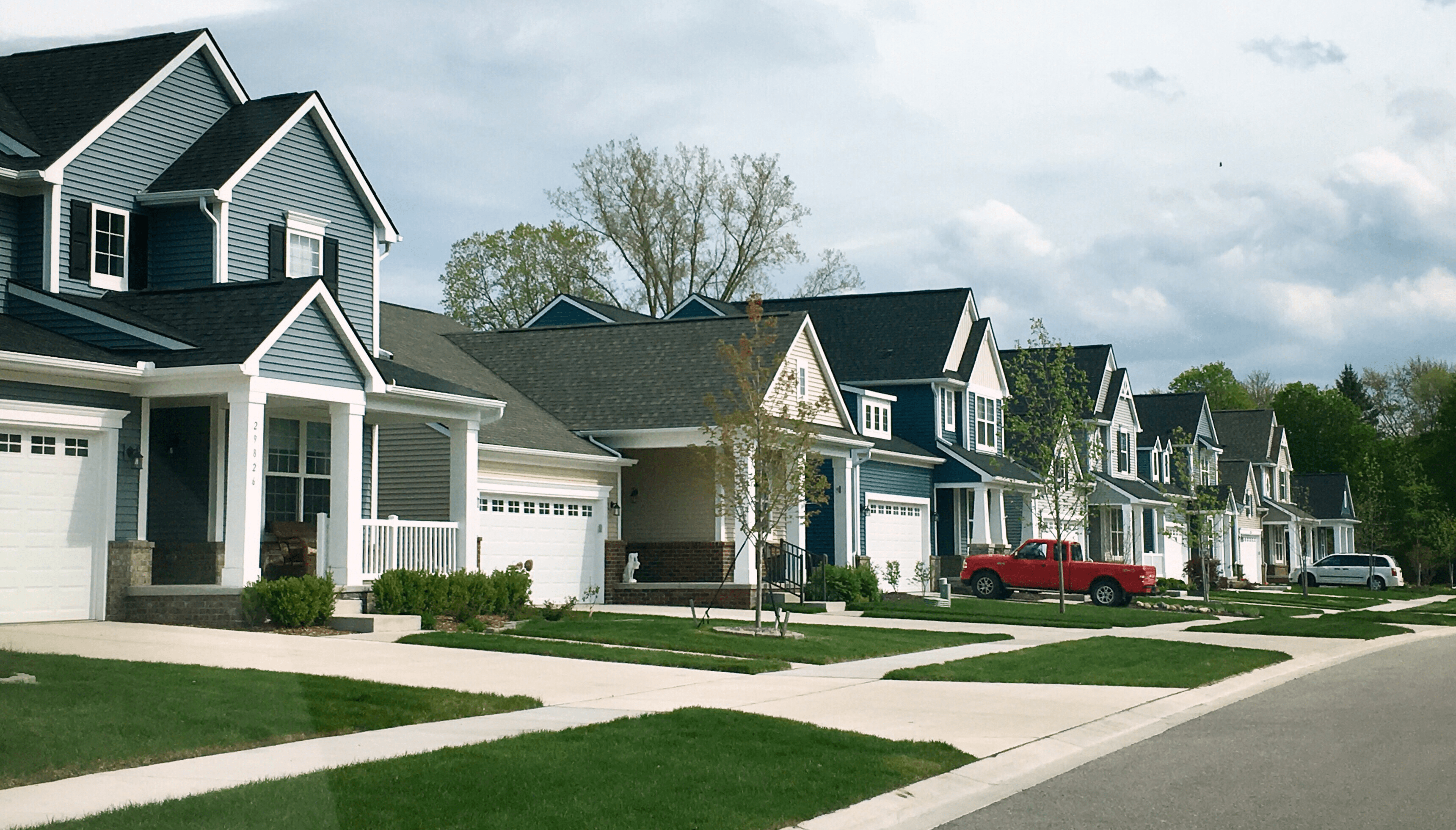Value Add Growth REIT III LLC
Invest Now

Raised
$4,869,700
Days Left
Closed
Business Description
The Company was formed to invest in real estate projects in the United States. The Company will focus primarily on multifamily value-add properties but will also look for opportunities across other commercial real estate sectors, including industrial projects, data centers, self-storage, and medical office projects. The Company might seek to identify existing projects that have become distressed because of the COVID-19 pandemic, but distressed projects will not be its principal focus.
Investment Strategy
The Company is seeking to invest in a diversified portfolio of predominantly multifamily value add real estate assets throughout the United States.
Specifically, we intend to invest primarily in multifamily value-add projects in markets that exhibit a trend of strong population and job growth and other favorable local market conditions. The value-add investment strategy entails (i) buying a project that in most instances is already stabilized and creating cash flow, (ii) implementing a capital expenditure program where we renovate both the interior units and the exterior of the property over a 18 to 36 month period, and (iii) improving the overall management of the property to decrease operating expenses and increase occupancy. We expect these renovations will allow us to charge tenants a higher rent and therefore “add value” to the asset by increasing cash flow and the property’s overall market value based on the higher net operating income.
The Company might also build or invest in new multifamily projects where it believes it can expect a significant profit.
The Company might also lend money to real estate projects to generate current yield.
COVID-19 and the Multi-Family Market
Historically, the multi-family market has been driven by favorable supply/demand fundamentals, including (i) a limited number of new units coming onto the market; (ii) the demographic often referred to as “echo boomers,” (iii) an increase in the number of immigrants; and (iv) tighter lending guidelines leading to lower rates of home ownership.
However, the onset of the global COVID-19 pandemic caused by the coronavirus has interrupted many of these positive fundamentals. Many of these interruptions are likely to negatively impact the multi-family market, as least in the near-term. Yet we remain optimistic about the medium-to-long term outlook of the multi-family market and believe the current market presents many exciting investment opportunities.
First, we believe that the number of new units coming onto the market will remain limited. According to the National Association of Home Builder’s (“NAHB”) Multifamily Production Index (“MPI”), production of new multifamily units has decreased significantly since the onset of COVID-19. Builders are reporting the worst building conditions for multifamily units since the fourth quarter of 2009 and NAHB’s Multifamily Market Vacancy Index (the “MVI”) is showing a significant increase in the number of vacant apartments in multifamily properties. Collectively, we believe these indicators are unlikely to improve as states continue to grapple with containing COVID-19, meaning that production of new multifamily units will remain stagnant.
Second, we believe the strong negative impacts of COVID-19 on labor markets will result in increased residential mortgage foreclosures and a larger pool of persons interested in multi-family housing. According to Federal Reserve Chairman Jerome Powell, among those persons working in February of 2020, almost 40% percent of those households making less than $40,000 a year lost a job in March of 2020. Many of these jobs were likely in lower-wage industries such as retail and leisure/hospitality which reported industry unemployment rates of 17.1% and 39.3% in April of 2020, respectively.
At the same time, the rise in COVID-19 cases across the country has increased the risk that the existing mortgage forbearance rate (estimated to be 8.6% of all active mortgages as of the final week of June 2020) will increasingly transition to mortgage foreclosures by the end of 2020. Some initial estimates project that the foreclosure rate could approach 20-30% of all active mortgages, indicating that the potential pool of people seeking multifamily housing is likely to increase, at least in the short-to-medium term.
Third, this projected increase in mortgage foreclosures is leading to tighter credit markets and increased standards for banks to originate new loans. According to the Mortgage Bankers Association’s Mortgage Credit Availability Index, the availability of mortgage credit has decreased significantly each month since the initial wave of COVID-19 cases in March 2020, and availability of mortgage credit in May 2020 was at is lowest levels since early 2014. This is due in part to major banks increasing their mortgage borrower standards by requiring larger down payments and higher credit scores to receive new mortgage loans. All of these factors would reduce the pool of persons interested and available to purchase a single-family home, and in turn, increase the demand for multi-family housing.
Finally, we believe that economic fallout from the COVID-19 crisis will ultimately result in more immigration from other countries, which will also increase demand for multi-family housing. While the rapid spread of COVID-19 has led many governments, including the U.S. government, to impose travel restrictions and decrease immigration from certain countries with higher prevalence of COVID-19 infections, we believe that COVID-19’s impact on certain industries will only serve to highlight the need for more immigration. For example, as the agricultural industry has experienced shortages due to localized outbreaks associated with the pandemic, many farms have been unable to fill labor shortages due to a dramatic decrease in immigration. Likewise, immigrant labor is strong in many essential businesses and services, all of which may highlight the important role immigrants play in our country and in our economy.

Problem
Historically, the multi-family market has been driven by favorable supply/demand fundamentals, including (i) a limited number of new units coming onto the market; (ii) the demographic often referred
Page | 6
4880-7275-3442, v. 1
to as “echo boomers,” (iii) an increase in the number of immigrants; and (iv) tighter lending guidelines leading to lower rates of home ownership.
However, the onset of the global COVID-19 pandemic caused by the coronavirus has interrupted many of these positive fundamentals. Many of these interruptions are likely to negatively impact the multi-family market, as least in the near-term. Yet we remain optimistic about the medium-to-long term outlook of the multi-family market and believe the current market presents many exciting investment opportunities.
Solution
The Company is seeking to invest in a diversified portfolio of predominantly multifamily value add real estate assets throughout the United States.
Specifically, we intend to invest primarily in multifamily value-add projects in markets that exhibit a trend of strong population and job growth and other favorable local market conditions. The value-add investment strategy entails (i) buying a project that in most instances is already stabilized and creating cash flow, (ii) implementing a capital expenditure program where we renovate both the interior units and the exterior of the property over a 18 to 36 month period, and (iii) improving the overall management of the property to decrease operating expenses and increase occupancy. We expect these renovations will allow us to charge tenants a higher rent and therefore “add value” to the asset by increasing cash flow and the property’s overall market value based on the higher net operating income.
The Company might also build or invest in new multifamily projects where it believes it can expect a significant profit. The Company might also lend money to real estate projects to generate current yield.
Business Model
The Company is seeking to invest in a diversified portfolio of predominantly multifamily value add real estate assets throughout the United States.
Specifically, we intend to invest primarily in multifamily value-add projects in markets that exhibit a trend of strong population and job growth and other favorable local market conditions. The value-add investment strategy entails (i) buying a project that in most instances is already stabilized and creating cash flow, (ii) implementing a capital expenditure program where we renovate both the interior units and the exterior of the property over a 18 to 36 month period, and (iii) improving the overall management of the property to decrease operating expenses and increase occupancy. We expect these renovations will allow us to charge tenants a higher rent and therefore “add value” to the asset by increasing cash flow and the property’s overall market value based on the higher net operating income.
The Company might also build or invest in new multifamily projects where it believes it can expect a significant profit. The Company might also lend money to real estate projects to generate current yield.
Market Projection
The Commercial Real Estate Market
The commercial real estate market is currently experienced market challenges in many locations throughout the United States. While retail, hospitality and office assets are experiencing significant vacancies, we expect the multifamily market will not see as steep of declines and in many markets will remain relatively stable given the overall housing shortage.
The Distressed Real Estate Market
Currently, we are beginning to see signs of distressed assets in the market, which allow for the potential to purchase assets at a significant discount. We plan to monitor certain markets for opportunities to invest in distressed assets assuming we are able to negotiate a purchase price that represents a significant discount to where we think true market value is.
Competition
The U.S. real estate market as a whole has historically experienced heavy demand and limited supply, with many developers, investors, and other parties competing for property. However, the current pandemic has negatively impacted virtually every sector of the U.S. and global economy, including real estate. Wages for many households are down (some significantly), unemployment is approaching record levels, and banks and other lenders are preparing for an expected deluge of foreclosures.
As a result, we believe that there will be a surge in existing multi-family housing projects available for purchase for the foreseeable future. At the same time, absent massive intervention into credit markets by the Federal Reserve, the expected tightening of credit markets may decrease the amount of capital to finance such purchases.
Accordingly, we believe the real estate market will favor large institutional investors and others with significant cash on hand or access to alternative financing methods. We may be at a disadvantage to our competition who may have greater capital resources than we do, including cash-on-hand. However, we believe that these larger competitors will focus on more expensive and larger properties, as the economic downturn associated with COVID-19 has also had some impact on medium- and upper-income communities. Thus, the Company will instead look for smaller to mid-sized properties, a market that typically involves individual and smaller institutional buyers rather than large institutions. The relative inefficiency in this segment and the likely surge in available properties due to COVID-19 and its related economic impacts may create excellent investment opportunities.
Traction & Customers
Operating Results
The Company was created on March 16, 2022. The Company has not conducted any business and therefore has no operating results.
Liquidity And Capital Resources
The Company is seeking to raise up to $5,000,000 of capital in this Offering by selling Class A Investor Shares to Investors.
The Company does not currently have any capital commitments. We expect to deploy almost all of the capital we raise in the Offering in making real estate investments. Should we need more capital for any reason, we could either sell more Class A Investor Shares or sell other classes of securities. In selling Class A Investor Shares or other securities, we might be constrained by the securities laws.
Investors
No investments have been made in the company to date. Additionally, the company currently has no debt.
Terms
The minimum amount the Company is trying to raise in this offering – our “target amount” – is $10,000 of Class A Investor Shares at $10.00 per share. If we have not raised at least the target amount by December 1st, 2022 – our “offering deadline” – then we will terminate the offering and return all the money to investors. Investments made by our principals and affiliates will count toward reaching the target amount.
If we do raise the target amount by the offering deadline then we will take the money raised and begin to use it. We will also continue trying to raise money up to our $5,000,000 maximum.
If we reach our target amount before the offering deadline we might close the offering early, but only if we provide at least five days’ notice of the new offering deadline. PicMii will notify investors when and if the target amount has been raised.
Risks
Required Statement:
A crowdfunding investment involves risk. You should not invest any funds in this offering unless you can afford to lose your entire investment.
In making an investment decision, Investors must rely on their own examination of the issuer and the terms of the offering, including the merits and risks involved. These securities have not been recommended or approved by any federal or state securities commission or regulatory authority. Furthermore, these authorities have not passed upon the accuracy or adequacy of this document.
The U.S. Securities and Exchange Commission does not pass upon the merits of any securities offered or the terms of the offering, nor does it pass upon the accuracy or completeness of any offering document or literature.
These securities are offered under an exemption from registration; however, the U.S. Securities and Exchange Commission has not made an independent determination that these securities are exempt from registration.
Additional statement:
There are numerous risks to consider when making an investment such as this one and financial projections are just that – projections. Returns are not guaranteed. Conditions that may affect your investment include unforeseen construction costs, changes in market conditions, and potential disasters
Security Type:
Equity Security
Price Per Share
$10.00
Shares For Sale
1,000
Post Money Valuation:
$75,000,000
Investment Bonuses!
Regulatory Exemption:
Regulation Crowdfunding – Section 4(a)(6)
Deadline:
December 1, 2022
Minimum Investment Amount:
$
Target Offering Range:
$10,000-$5,000,000
*If the sum of the investment commitments does not equal or exceed the minimum offering amount at the offering deadline, no securities will be sold and investment commitments will be cancelled returned to investors.

Alan Lewis
Chief Financial Officer
BackgroundMr. Lewis is the Chief Investment Officer and Co-Founder of the Sponsor, DiversyFund, Inc. Prior to the launch of the Manager, he was the head of the real estate private equity division of a real estate investment and development firm based out of Salt Lake City, Utah, where he oversaw capital raising, deal structuring and development work for multi-family projects and master-planned residential communities. Previously, Mr. Lewis worked for nearly ten years on Wall Street as both an investment banker and a corporate lawyer, most recently working as a Managing Director of the Investment Banking Division of Brill Securities where Mr. Lewis provided financial advisory and capital raising services for high-growth companies along with real estate and oil and gas projects. Prior to joining Brill Securities in 2010, Mr. Lewis practiced as a corporate attorney at Davis Polk & Wardwell, a Tier 1 ranked Wall Street law firm (Chambers USA). His practice included IPO’s, mergers and acquisitions, and commercial real estate, including the acquisition and refinancing of several Fifth Avenue commercial buildings, acquisitions and portfolio restructurings for a $6 billion real estate private equity fund. Over his career, Mr. Lewis has worked on transactions totaling, in aggregate, over $41 billion. Mr. Lewis received a BA from Brigham Young University and a JD from Columbia Law School, where he was a Senior Editor on the Columbia Law Review. Mr. Lewis is admitted to practice law in New York and previously held Series 7, 66 and 79 FINRA licenses.

Craig Cecilio
Chief Executive Officer
BackgroundMr. Cecilio is the Chief Executive Officer and Co-Founder of the Sponsor, DiversyFund, Inc. Mr. Cecilio has worked in the real estate industry for nearly 20 years. Over the course of his career, Mr. Cecilio has participated in the development of over 1,000 single family residences in California as either a joint venture equity partner, lender, or sponsor. Previously, Mr. Cecilio owned a real estate lending business, Coastal California Funding Group, Inc., which underwrote and financed residential renovations and ground-up construction in California coastal markets such as San Diego, Orange County, Los Angeles and San Francisco, and a loan servicing business. Additionally, Mr. Cecilio founded a real estate debt fund in 2013, which manages a portfolio of real estate-backed bridge loans used primarily to “pre-fund” many of the Manager’s real estate projects. Since 1997, Mr. Cecilio has financed nearly $500 million of real estate assets, having raised over $100 million in debt or equity for real estate transactions in the last three years, and has developed and managed over $50 million of residential property (renovations and ground-up). Mr. Cecilio is a graduate of the University of Colorado at Boulder.
Company Name
Value Add Growth REIT III LLC
Location
750 B Street
Suite 1930
San Diego, California 92101
Number of Employees
0
Incorporation Type
LLC
State of Incorporation
Delaware
Date Founded
March 16, 2022


